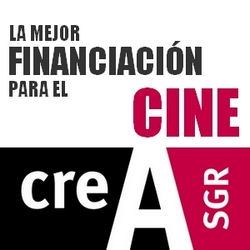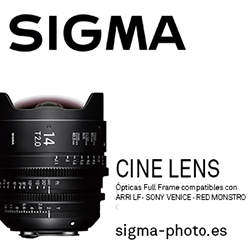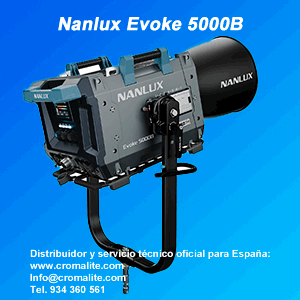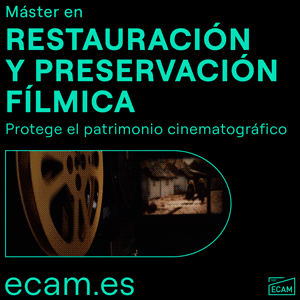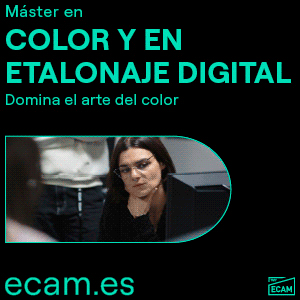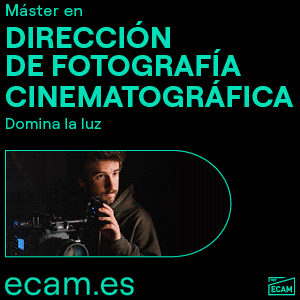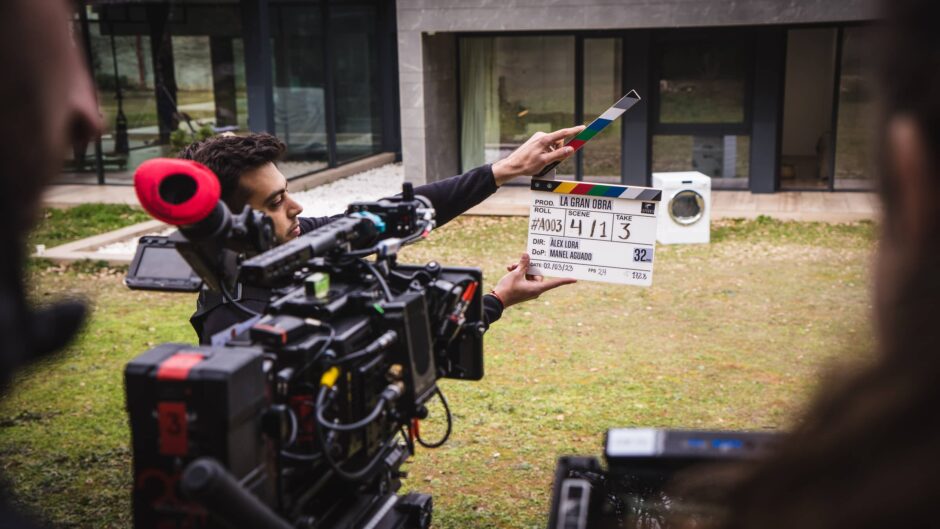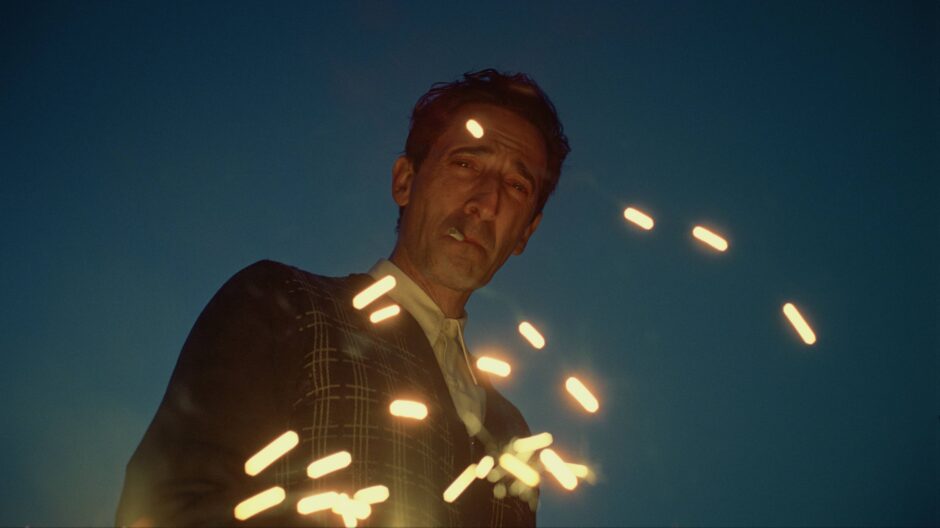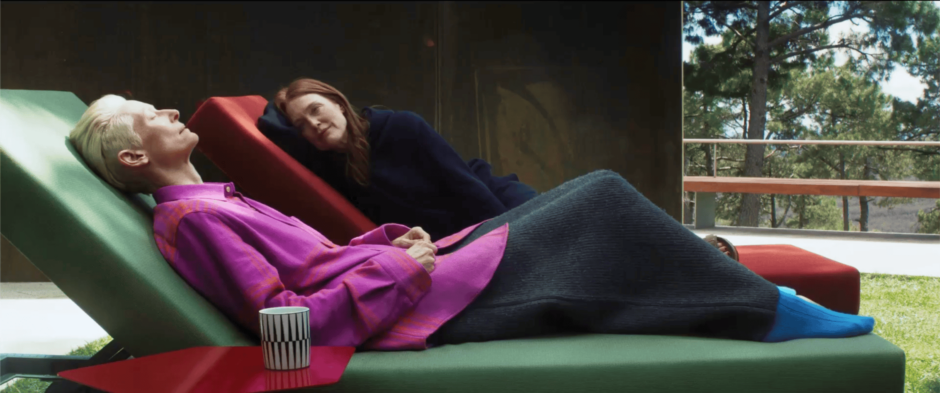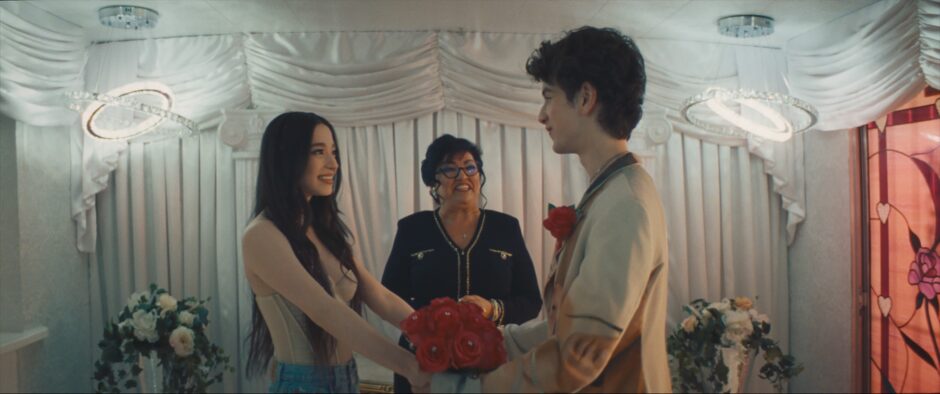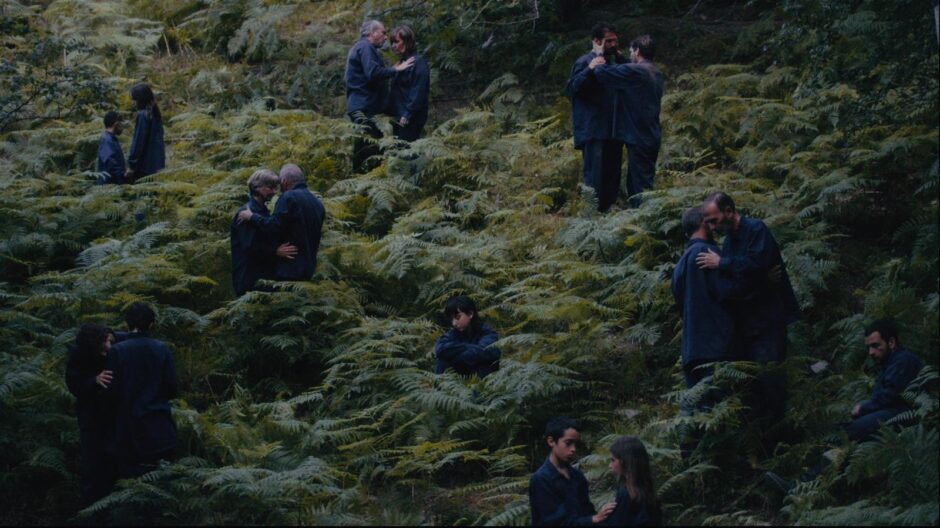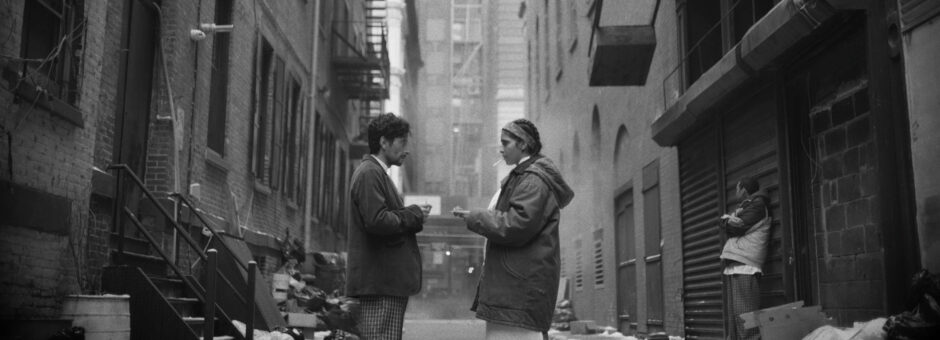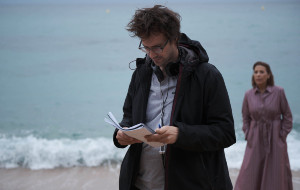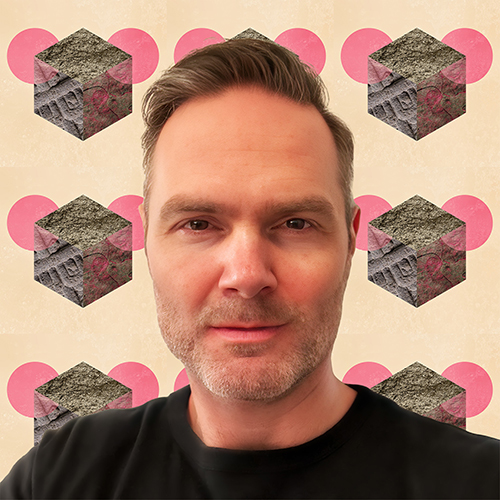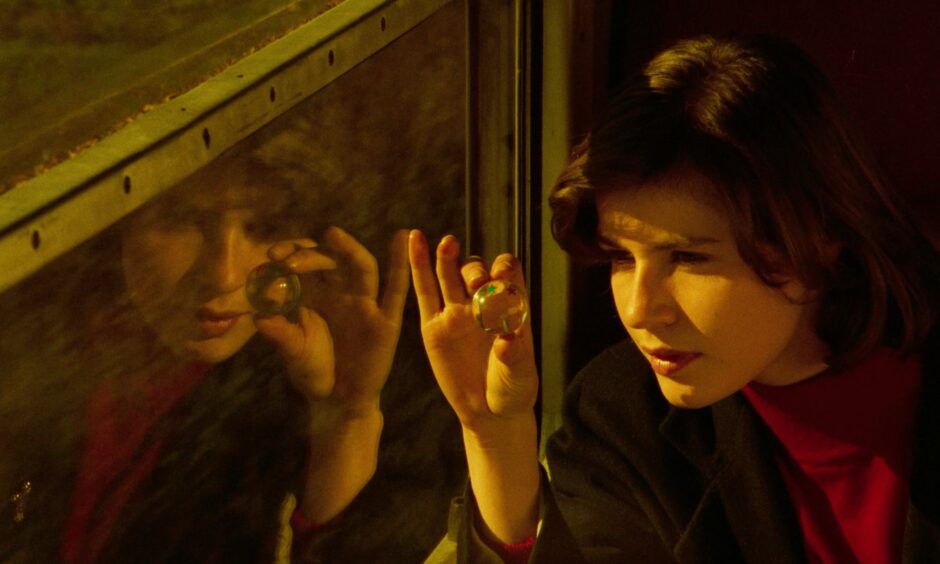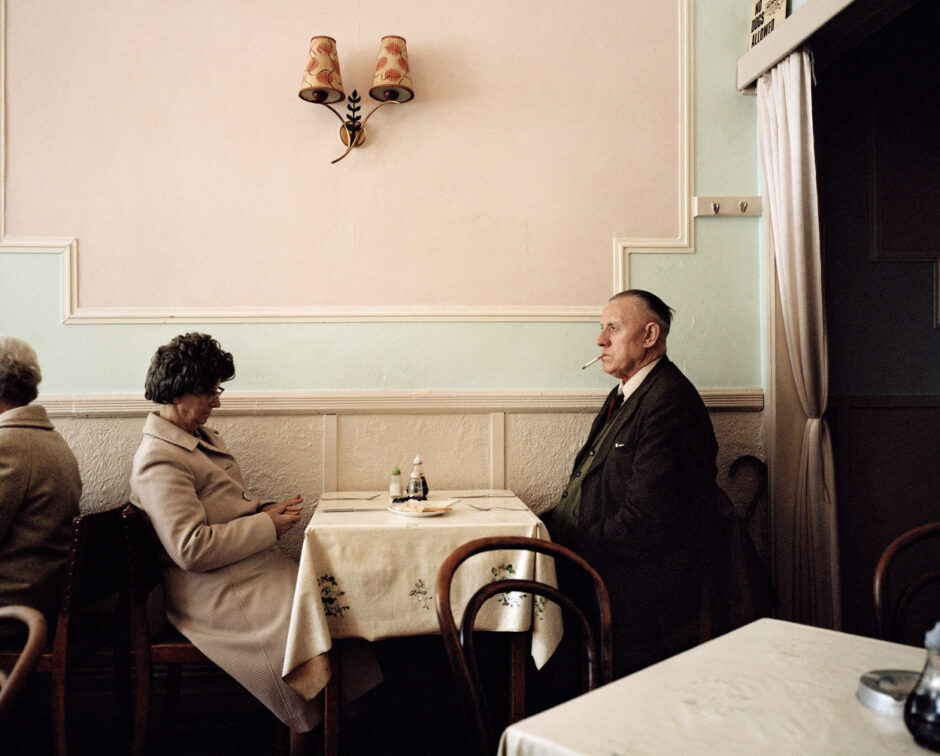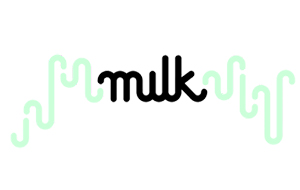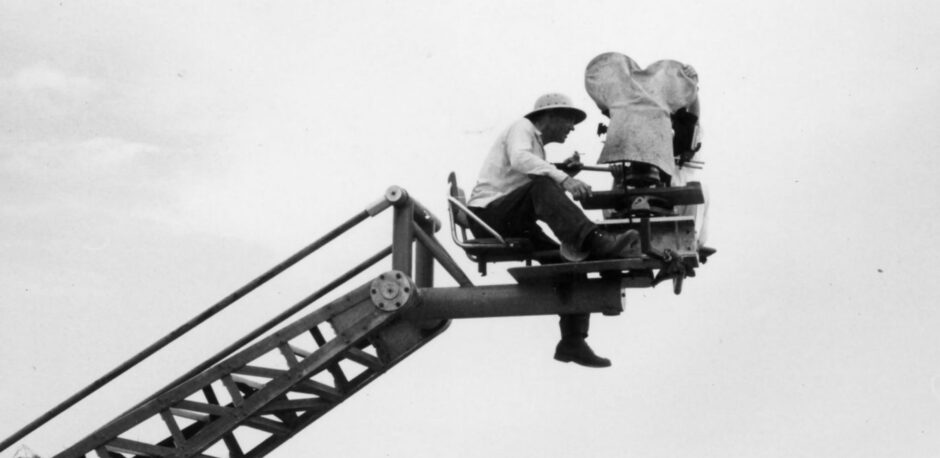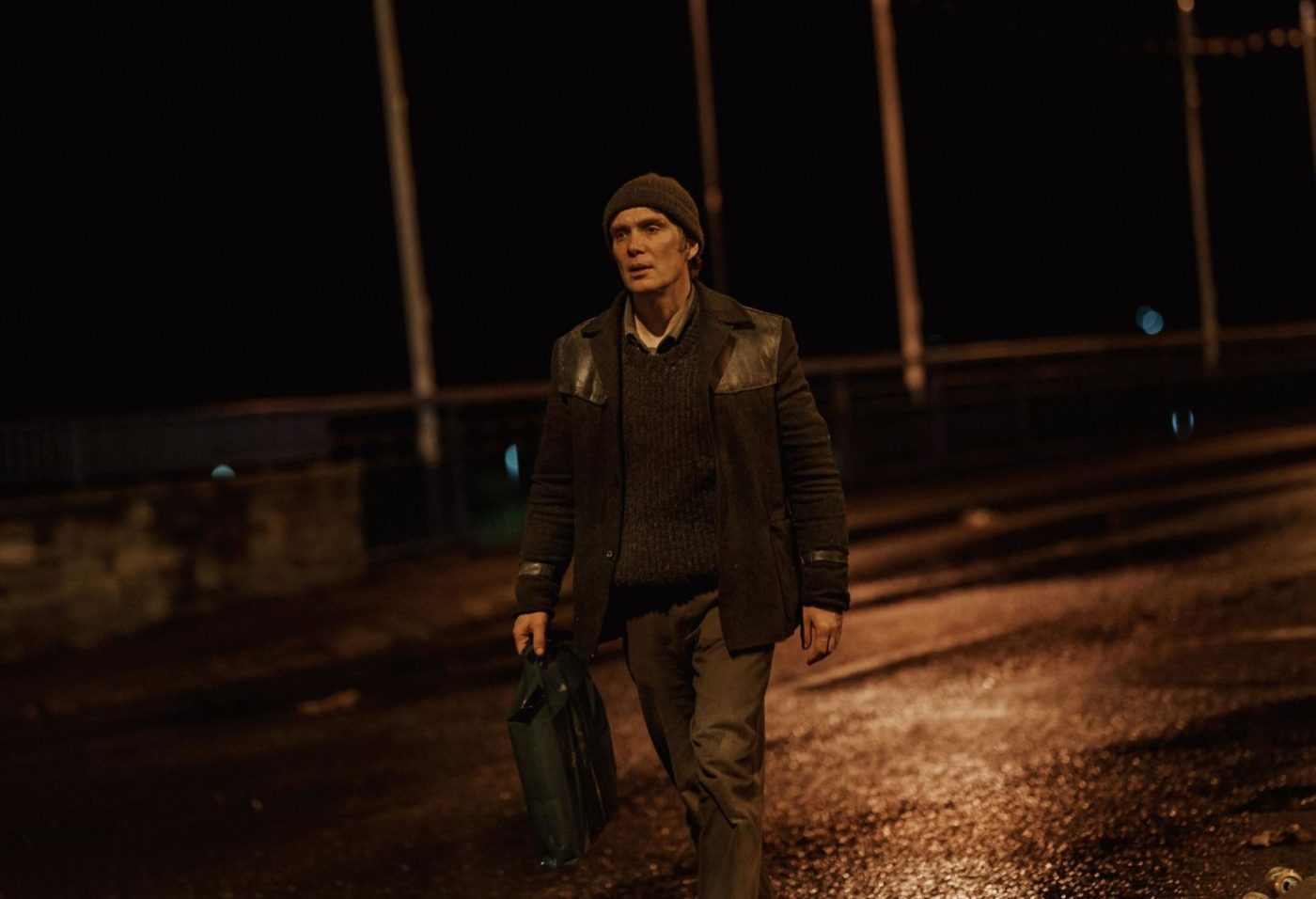
Frank Van den Eeden: La traducción fotográfica de la intensidad dramática / The photographic translation of dramatic intensity (ES/EN)
Entrevistamos al director de fotografía de ‘Small things like these’, la película de apertura de la 74 Berlinale / Interview to Frank Van den Eeden, cinematographer of ‘Small things like these’
A la cabeza del 74º Festival de Berlín se encuentra Small Things Like These, película producida y protagonizada por el reciente ganador del Oscar, Cillian Murphy, junto a Matt Damon. Aunque en principio la película parece ajustarse a los criterios del festival para un largometraje inaugural, sorprende por su discreto planteamiento. Arraigada en la cultura y la historia irlandesas, ofrece una narración sombría y desafiante que retrata la conciencia de un padre de familia que se enfrenta a los abusos que sufren las mujeres y los niños confinados en las lavanderías católicas de la Magdalena.
At the forefront of the 74th Berlinale Festival is ‘Small Things Like These,’ produced by and featuring the recently Oscar-winner Cillian Murphy, along with Matt Damon. While the film initially appears to fit the festival’s criteria for an opening night feature, it surprises with its understated approach. Rooted in Irish culture and history, it offers a somber and challenging narrative that portrays the consciousness of a family father who confronts the entrenched abuses upon the women and children confined in the Catholic-run Magdalena laundries.
Autora: Irene Cruz
1985, víspera de Navidad en un pequeño pueblo del condado de Wexford, Irlanda. Bill Furlong trabaja como comerciante de carbón para mantenerse a sí mismo, a su mujer y a sus cinco hijas. Una mañana temprano, mientras reparte en el convento local, descubre algo que le obliga a enfrentarse a su pasado y al silencio cómplice de un pueblo controlado por la Iglesia católica. Película basada en la novela homónima de Claire Keegan.
It is 1985 in the run-up to Christmas in a small town in County Wexford, Ireland. Bill Furlong toils as a coal merchant to support himself, his wife and his five daughters. Early one morning while out delivering coal at the local convent, he makes a discovery that forces him to confront his past and the complicit silence of a town controlled by the Catholic Church. Based on the novel of the same name by Claire Keegan.
En la reciente edición de la Berlinale, tuvimos el honor de conversar con Frank van den Eeden, un renombrado director de fotografía holandés reconocido por su sobresaliente trabajo. Miembro destacado de la Sociedad Belga y Holandesa de Directores de Fotografía, así como de la Academia Europea de Cine, Van den Eeden inició su destacada carrera tras obtener su Máster en Artes Visuales en la Escuela de Cine Sint Lukas de Bruselas en 1999. Actualmente radicado en Amberes, su pasión por la cinematografía es inspiradora. Su inigualable habilidad y sensibilidad en su trabajo se reflejan en películas aclamadas como «Girl» y «Close», bajo la dirección de Lukas Dhont. Asimismo, es un colaborador habitual del director Tim Mielants, con quien ha realizado proyectos como «Patrick» (2019) y «The Terror» (Serie en curso).
During Berlinale, Camera & Light had the pleasure of speaking with Frank van den Eeden, a distinguished Dutch Cinematographer known for his remarkable work. He is a member of both the Belgian and Dutch Society of Cinematographers as well as the European Film Academy. Van den Eeden’s prolific journey in the world of cinema started with his graduation as a Master in Visual Arts from the Sint Lukas Filmschool in Brussels in 1999. Currently based in Antwerp, Belgium, his passion for cinematography continues to thieve. Renowned for his exceptional personality and sensitivity in shaping the direction of photography, you may be familiar with his outstanding contributions to films like ‘Girl’ and ‘Close’, directed by Lukas Dhont. Additionally, he is a frequent collaborator with director Tim Mielants, having worked on projects such as ‘Patrick’ (2019) and ‘The Terror’ (Ongoing Series).
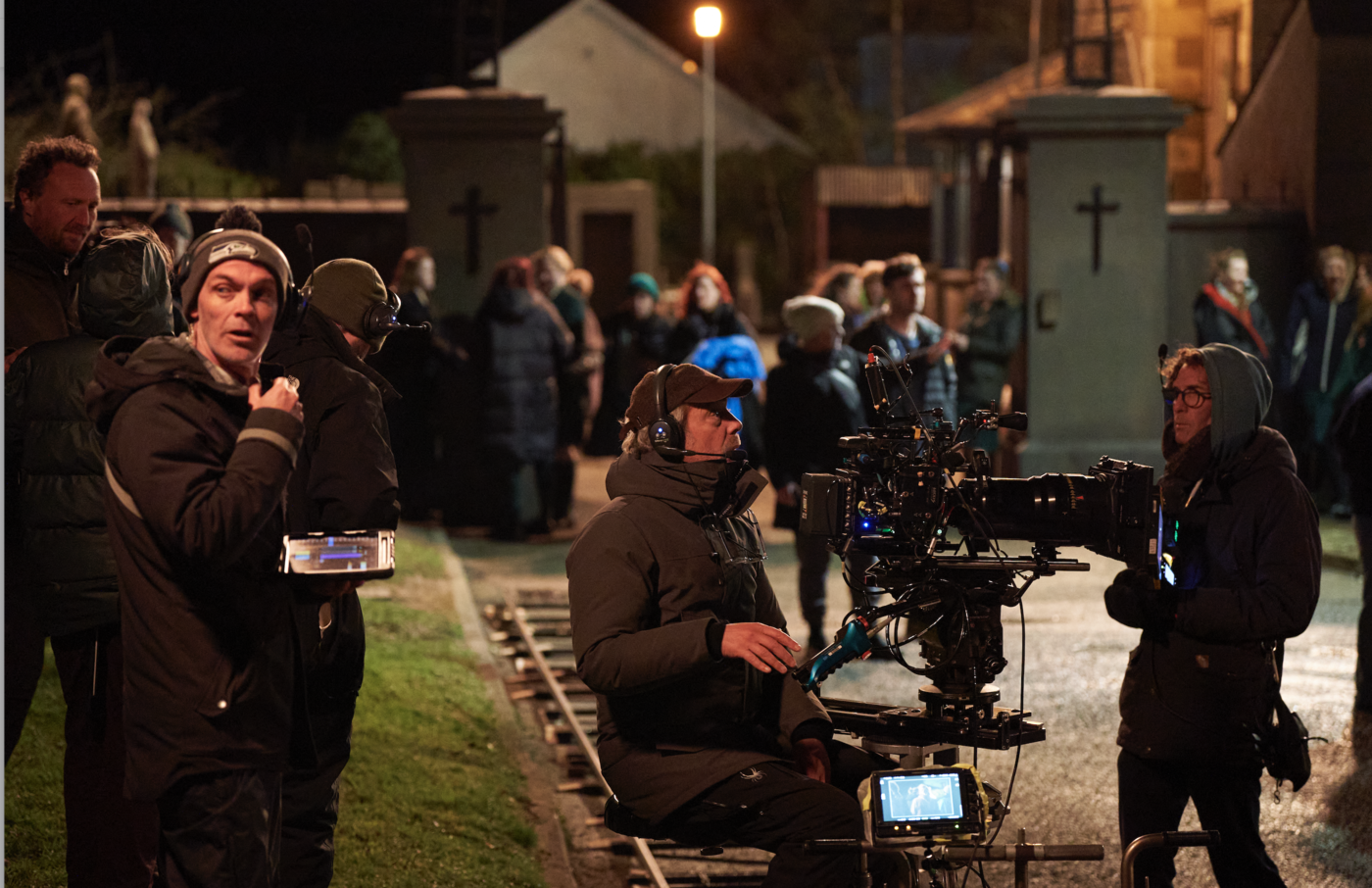
ENTREVISTA A FRANK VAN DEN EEDEN SBC NSC / INTERVIEW TO FRANK VAN DEN EEDEN SBC NSC
¿Cómo fue el proceso de preparación para la película? ¿Leíste personalmente el libro de Claire Keegan en el que se basa el guion? / How was the preparation process for the film? Did you personally read Claire Keegan’s book on which the script is based?
Permíteme comenzar explicando brevemente que Tim no es solo un director con el que colaboro, también es un buen amigo mío, vivimos en la misma ciudad. Creo que una gran ventaja de trabajar con alguien que está cerca también a nivel personal es que puedes sumergirte más o menos de inmediato en lo que trata la película. Teníamos mucha confianza el uno en el otro, lo que hizo que la preparación fuera cómoda y fácil, fue un buen comienzo. Él vino a mí y me dijo: «Tengo esta película con Cillian Murphy», lo que me interesó de inmediato, por supuesto, porque es un gran actor. Luego me explicó un poco sobre la historia. Dijo “es una película muy pequeña: Small things like these”.
Me pidió que leyera el guion y no tuve dudas al respecto, le dije: «¡Definitivamente quiero hacer esto!» Es mi estilo totalmente: un personaje, una personalidad, y todo comienza desde este núcleo, lo cual me gustó mucho. No leí el libro, pero ha estado en mi mesilla de noche desde entonces, decidí no tocarlo durante la preparación. Creo que fue porque cuando comenzamos a hablar sobre la historia, cómo Tim la imaginaba, cómo deberíamos llevarla a la pantalla, ya empezamos a desarrollar ideas, y en cierto momento, pensé: «Si empiezo a leer el libro ahora, podría ser útil, pero también puede suceder que tenga dudas sobre algunas de las ideas de las que hemos estado hablando, que ya estaban tomando forma». Así que, en cierto momento, pensé: «¿sabes qué? no voy a tocar el libro». Voy a ceñirme al guion y a los comentarios de Tim.
Tim propuso abordarlo visualmente: él quería que lograra en la cinematografía esta sensación de «El Día de la Marmota» donde, de hecho, cada día en la vida de este hombre se verá más o menos como el día anterior, el día anterior y el día anterior y tradujo esto en largos planos secuencia.
Let me begin by explaining briefly that Tim is not only a director that I work with, he is also a good friend of mine. We live in the same city. I think a big advantage of working with somebody who is close to you also on a personal level is that you can more or less immediately dive into what this film is about. We were very confident with each other, which makes preparation comfortable and easy, that was a nice kickstart. He came to me and told me “I have this film with Cillian Murphy” which I was immediately interested in, of course, because he’s a great actor. And then he explained to me a little bit about the story. He said it’s a very small film: ‘Small things like these’.
He asked me to read the script and I had no hesitation about it. I immediately said to him “I definitely want to do this!” It’s my cup of tea: one character, one personality, and everything starts from this one person, which I really liked. I did not read the book, but it has been next to my bed ever since then, on a pile of books, but I decided not to touch it during preparation. I think it was because when we started talking about the story, like how Tim imagined, how we should bring the story to the screen, we already started to develop ideas. And at a certain moment, I thought “If I start to read the book now, it might be helpful, but it can also happen that I have second thoughts about some of the notions that we have been talking about, that have been already taking shape”. So at a certain moment, I preferred to stick to Tim’s script, that was very faithful to the book.
¿Podrías explicar cómo encontrasteis las localizaciones para la película? ¿La ciudad es como ya se describió en el libro, o tuvisteis que ser creativo al respecto? / Could you explain how you found the locations for the film? The town is how it was already described in the book, or you had to be creative about it?
Históricamente, esta película tiene lugar en New Ross. De alguna manera, estábamos obligados a ir allí. Quiero decir, no es que debamos, pero estaba allí… Entonces, ¿por qué no usarlo? Queríamos ir con lo real tanto como pudiéramos. Es un pequeño pueblo irlandés muy típico. Tiene dos caras: Por un lado, es bastante romántico, algo hermoso, que no es la parte que necesitábamos y, por otro lado, una parte que es más real, que tiene esta energía oscura, de cielos grises y ambiente sórdido, ese lugar podía ser bastante deprimente en cierto modo, y esto es lo que realmente nos interesaba.
Rodamos una gran parte allí y luego teníamos otras localizaciones que estaban más al este, alrededor de Dublín. Más o menos éramos libres de ir donde queríamos, no había demanda de ser 100% históricamente correctos.
Historically, this film takes place in New Ross. In a way, we were obliged to go there. I mean, it’s not a must, but it was there… So, why not use it? go with the real thing as much as we can, which brought us to the actual city, which is a very typical Irish small town. It has two faces: On the one hand, it’s quite romantic and beautiful, which is not the part that we needed. And on the other hand, it’s more real, it has this dark energy, gray skies… that space could be quite depressing in a way, and this is what we were actually interested in.
We shot a big part there and then we had like a handful locations which were more to the east, around Dublin, we were more or less free to go where we wanted, there was no demand to be historically correct there in a way.
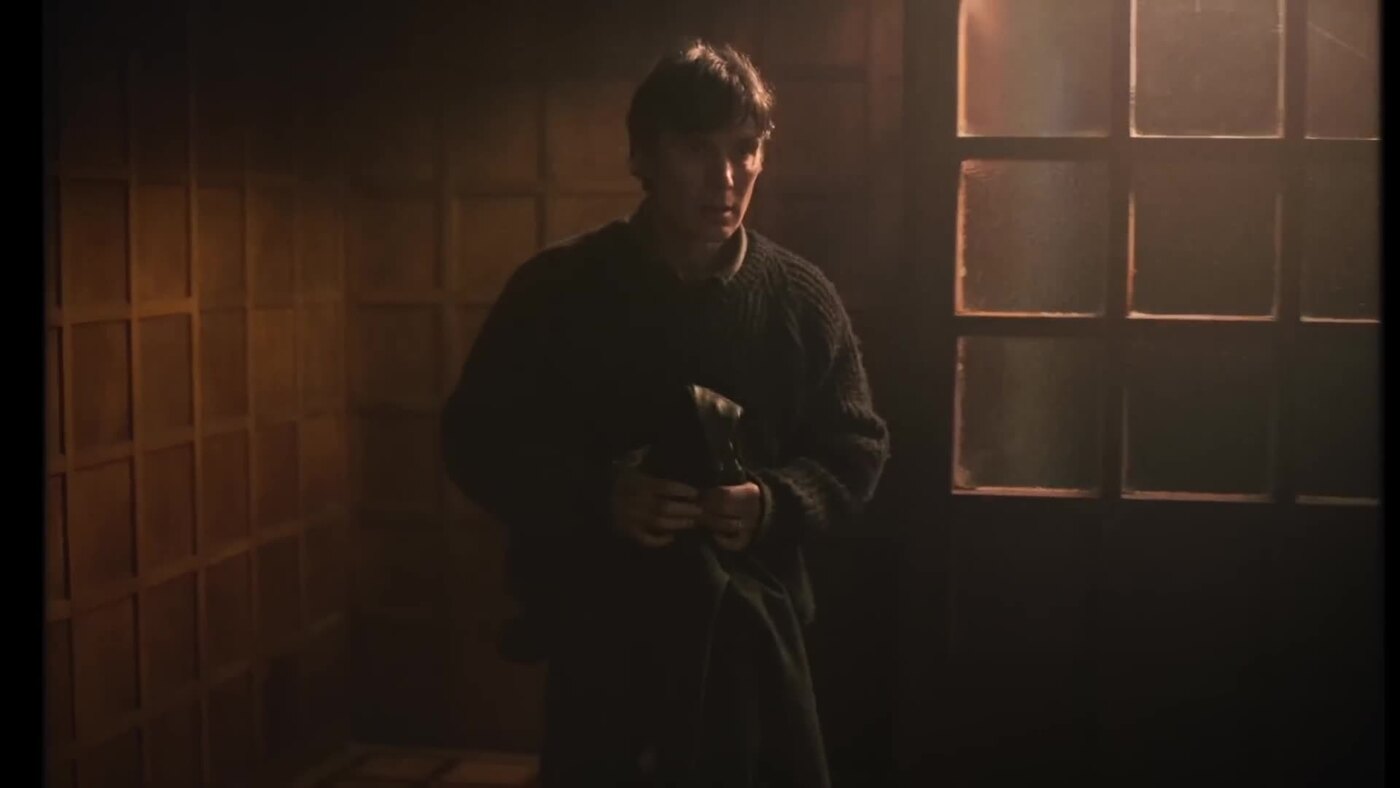
Estuve en la conferencia de prensa con Tim y parte del equipo el día después del estreno. Comentó que la película resonó íntimamente en su interior, casi como un viaje de sanación personal. Y veo que eres un director de fotografía que siempre apoya a estos directores que trabajan en películas intensas y profundas. El lugar al que llegas con tus imágenes es muy conmovedor, y entiendo que es posible en cierto modo porque Tim es tu amigo, y es bonito trabajar mano a mano para desarrollar así este arte. Realmente creo que lo transmites en cada película que hiciste con él o con Lukas Dohnt, y eso me llevó a buscar inicialmente “quién es este director de fotografía” en los créditos. / The day after the movie premiered I was in a in the press conference with Tim and part of the team. He said that he took this movie deeply to himself, just as kind of a healing process. And I see you are a DP that are always supporting these directors that are working on intense and deep movies. The place you reach with your images It’s very touching, and I observe that it’s possible in a way because Tim is your friend, and it’s beautiful to work hand to hand to develop this art. I do believe that you really transmit it in every movie you did with him or with Lukas Dohnt and this is what made me look initially for “who is this cinematographer” in the credits…
Es absolutamente maravilloso escucharlo, porque creo que se puede ver nuestro trabajo de muchas maneras. Puedes ser un director de fotografía que quizás sea excelente dominando la técnica y capaz de crear una cinematografía estética, pero lo que comentas, para mí es realmente hermoso, en el sentido en que creo que, si hacemos nuestro trabajo correctamente, siempre se trata de traducir una sensación o una intención dramática a la película, de una manera en la que simplemente ayuda a la historia. Pones tu energía en tratar de llegar a la mayor cantidad de personas posible, sin importar dónde estén. Y si logramos eso, es fascinante. Quiero decir, eso es lo que me hace levantarme por la mañana y si tienes éxito en eso es gratificante. Recibo lo que dices como un gran cumplido. Gracias.
He estado haciendo esto durante 25 años y, especialmente al principio, digamos, en los primeros 10 años, no podía elegir solo los proyectos que me interesaban. Es un proceso largo, y me siento afortunado de que este tipo de guiones lleguen a mí. Es un proceso largo, como una cadena de eventos. Tomas muchas decisiones durante tu vida. Y después de años piensas «ok, creo que más o menos estoy donde quiero estar profesionalmente». Pero el camino ha sido arduo y el sentimiento de ser afortunado de que algo interesante llegue todavía está presente. No doy esto por sentado. Haces algo de lo que estás orgulloso e inmediatamente se traduce en: “quiero hacer lo mismo, no copiar y pegar, pero lograr el mismo objetivo”. Una vez que está allí, quizás sea aún más difícil porque no quieres dejar ir ese sentimiento.
Si hacemos nuestro trabajo correctamente, siempre se trata de traducir una sensación o una intención dramática a la película, de una manera en la que simplemente ayuda a la historia.
That’s absolutely wonderful to hear because I think you can look at our jobs in many, many ways. You can be a DP who is maybe excellent in mastering the technicality and is able to convey an aeshetic cinematography, but what you say now to me is actually very beautiful in the way that I think if we do our job right, it is always about translating a dramatic feel or dramatic intent to the movie. In a manner that just simply helps the story and you put your energy to try to reach as many people as you can, no matter where they are. And if we manage to accomplish that, that’s marvelous. I mean, that’s the thing that makes me get up in the morning and if you succeed in that, it’s rewarding! I receive what you say as a huge compliment.
I’ve been doing this for 25 years and especially, in the beginning -let’s say the early 10 years-, I was not able to pick only the projects that I was super interested in. It’s a long process. But I still feel lucky these days that these kinds of scripts come to me. It’s like a chain of events. You make a lot of choices during your life. And after years, all of a sudden you find yourself in a place where you think “ok, I think I’m more or less where I want to be career wise” but the road has been long and the feeling of being lucky that something interesting comes, is still there. I don’t take this for granted. You do something that you’re proud of, in the way that you get great responses and then immediately translates to: I want to do the same thing, not copy paste, but you want to achieve the same goal. Once it’s there, it’s maybe even harder because you don’t want to let go of this feeling.
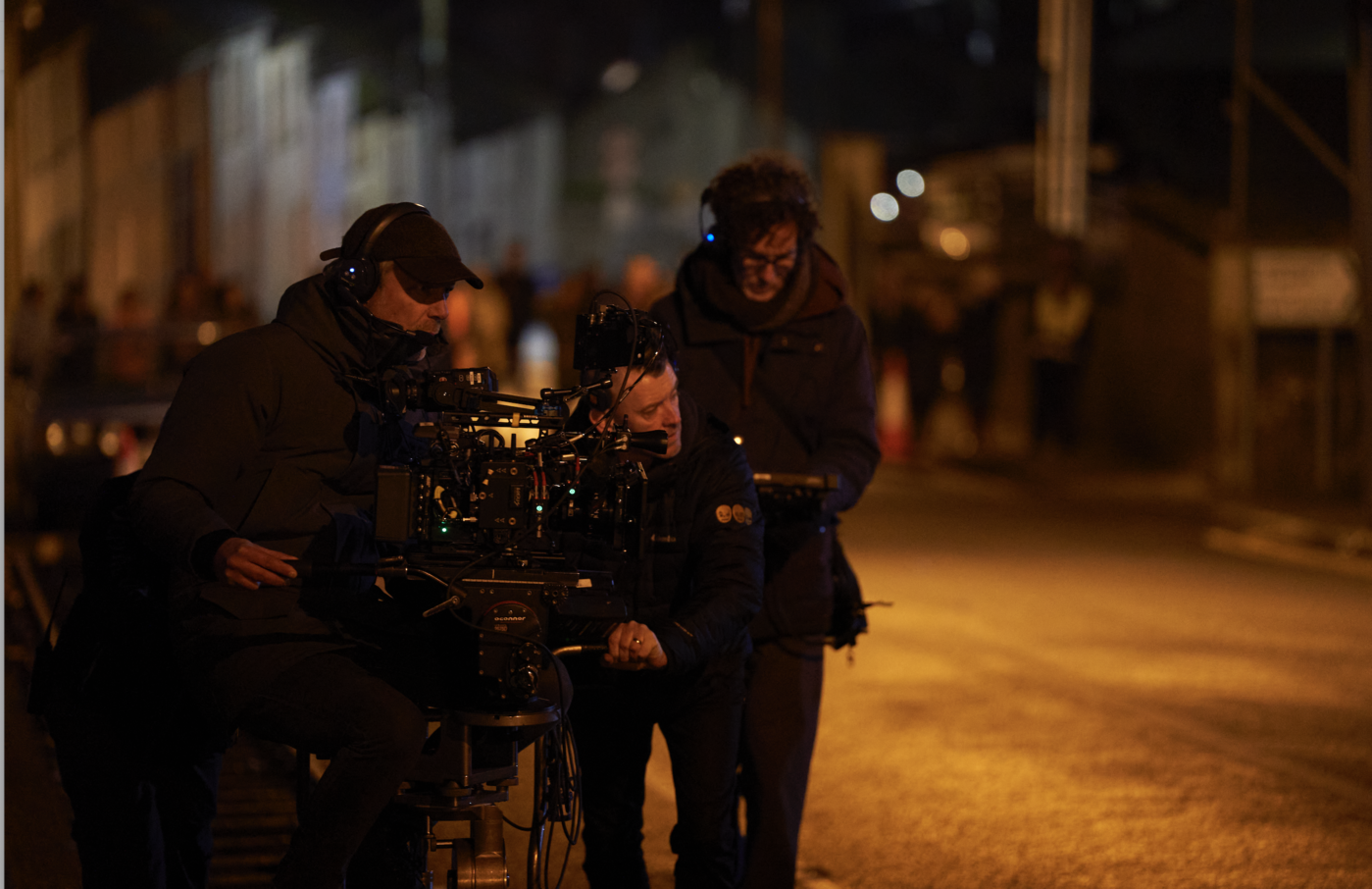
La siguiente pregunta se trata más de tu estilo personal que observo en diferentes películas en las que participas como director de fotografía. Por ejemplo, con Lukas Dhont en Girl (2018) y en Close (2022), la cámara se mueve, la cámara juega, la cámara es como otro niño, otra bailarina… Y, por ejemplo, en Small things like these eres más como un voyeur, mantienes una distancia de lo que está sucediendo. Solo te acercas y conectas en momentos psicológicos/neuróticos. ¿Cómo abordas la cinematografía con diferentes directores? / The next question is more about like your personal style and the touches of you as DP that I see in different movies. For example, with Lukas Dhont in ‘Girl’ (2018) and in ‘Close’ (2022) the camera is moving, the camera is playing, the camera is like another child, another ballerina… And for example, in ‘Small things like these’ you are more like a voyeur, you have like a distance from what is happening. Just getting closer and connecting in psychological/neurotic moments. How do you approach cinematography with different directors?
Primero que todo, lo que dices es absolutamente cierto, cada director es diferente. Tengo suerte en este caso, porque Tim es el tipo de director que viene muy bien preparado. Cuando hablamos sobre este proyecto por primera vez, él ya había leído el libro varias veces. Teníamos una retroalimentación constante: cuando le compartía mis impresiones él volvía a su casa y comenzaba a escribir planos o detalles que él tenía en mente. Él elabora y explica muy claramente su enfoque.
El núcleo de la cinematografía de Small things like these trata sobre lo que le sucede dramáticamente a esta única persona que tiene una forma muy monótona de vivir su vida. Básicamente es un padre de familia que tiene su propio negocio. Es un hombre que no está dispuesto a tomar riesgos, va a lo seguro y partiendo de esta premisa de repente surge un punto de inflexión en su vida. Así es cómo Tim propuso abordarlo visualmente: él quería que lograra en la cinematografía esta sensación de «El Día de la Marmota» donde, de hecho, cada día en la vida de este hombre se verá más o menos como el día anterior, el día anterior y el día anterior y tradujo esto en largos planos secuencia. Todo estaba fijo, teníamos algunos movimientos, pero no se trataba de ser inestable, ni de ir cámara en mano o de ser impredecible. Así que, por ejemplo, la cámara siempre está montada de la misma manera en la grúa. Cuando camina, siempre es la misma energía baja y de esta repetición surge su momento de cambio cuando está en el convento, después de la escena con la monja, cuando sale se acerca brevemente a la chica y dice: «Mi nombre es Bill Furlong y si hay algo que pueda hacer para ayudarte, por favor, contáctame. Estaré aquí para ti». Este es uno de los breves momentos que filmamos con cámara en mano, solo para enfatizar cómo este momento realmente descoloca a este hombre.
Esto fue lo fundamental: la repetición que enfatiza que el hombre se mueve y trabaja en un universo muy pequeño. Creo que estas serían las reglas del juego.
First of all, what you say is absolutely true, every director is different. I am lucky in this case because Tim is the kind of director who comes really well prepared. When we spoke about this project for the first time, he had already read the book a few times. We were having feedback regularly: I share with him my impressions and he goes back to his home and he starts to write down shots, or details he has in mind. He shares very clearly his approach. The core of the cinematography of ‘Small things like these’ is about what is happening dramatically to this one person, who has a very repetitive way of living. He is basically a family guy who has his own business. He is not willing to take risks, he is playing his life safe, which defines him as a person and then from this comes a turning point.
This is actually how Tim proposed to approach this visually, he said what he wanted me to achieve: Is to have this ‘Groundhog Day’ feeling of cinematography where actually every day in this man’s life will more or less look like the day before, the day before and the day before. And he translated this into long traveling shots. Everything was fixed, we did have some movements, but it’s not about being unstable, being handheld or being unpredictable. So for instance, if you look at when he is working, the camera is always mounted the same way on the crane. When he’s walking, it’s always the same low energy and from this repetition then suddenly comes his moment of change where he actually is in the convent, after the scene with the nun, when he walks out, he briefly approaches the girl and says: “My name is Bill Furlong and if there is anything I can do to help you, please reach out. I’ll be there for you”. This is one of the brief moments that we shot handheld, just to emphasis on how this moment messes actually with this guy’s head.
This was at the core: It’s very much about repetition, very much like emphasizing that this is a very small universe that this guy is working in. I think this would be the set of rules.
¿Qué referencias trabajaron el director y el departamento de arte contigo? ¿Cómo decidisteis el aspecto y ambiente de la película? / What references did the director and the art department work with you? How did you decide on the look of the film?
Tuvimos un excelente director de arte con nosotros que también era el diseñador de producción. Fue la primera vez que trabajé con él. Su nombre es Paki Smith. No solo es excelente en su trabajo, sino que también tiene una personalidad muy agradable y es muy divertido. Tenía que adaptar nuestro universo existente a New Ross en los años 80.
Él era consciente de no saturar la película introduciendo los años 80 en cada rincón en el que estábamos filmando. De alguna manera, fue sutil, pragmático, enraizado en el realismo y lo bueno es que entendió que en aquellos días la gente en New Ross era muy, muy pobre y en realidad estaba más arraigado en los años 70 porque la gente todavía estaba saliendo de esa década, él claramente captó esto.
Cuando se trata de traducir el diseño de producción y la cinematografía juntos, creo que lo que realmente estábamos buscando son, diría yo, los elementos atmosféricos: la condensación en las ventanas, la lluvia… por supuesto, la nieve, todo lo que nos ayudaría a construir un universo frío, invernal, húmedo, que en realidad se sentiría un poco desagradable. Así que nos centramos en llevar el frío a nuestras tomas en muchos niveles y creo que Paki fue excepcional en su trabajo. Para lograrlo, lo que hizo Tim fue simplemente recopilar muchas referencias sobre estos elementos atmosféricos, las juntamos todas y las revisamos con Paki. Las sugerimos una por una por ubicación específica: “¿Qué tal si enfatizamos un poco más en esto, o qué tal si vamos un poco más con aquello…” fue un proceso orgánico en cierto modo?
We had a great art director with us, also he was the production designer. It was the first time I worked with him. His name is Paki Smit. He is not only great at his work, but he also has a very nice personality and he is a very funny guy. Of course, he had to translate our existing universe to New Ross in the 80s.He was aware about not to suffocate this into bringing the 80s into every corner we were shooting in a way, he was subtle, grounded in realism, pragmatic and the good thing he understood is that at those days people in New Ross were very poor and it’s actually more grounded in the 70s because people were still like stepping out of the 70s. He clearly got this. When it comes to translating production design and cinematography together, I think what we were actually looking for are the atmospheric elements: condensation of windows, rain… of course, snow, everything that would help us to build a cold, wintery, moist, damp universe which actually would feel a little bit unpleasant to be in. So, we were focusing on bringing the cold into our shots on many levels and I think Paki worked on it outstandingly.
In order to get there, what Tim did was simply gathering a lot of references on these atmospheric elements and we put them altogether and we checked with Paki, we were suggesting one by one per specific location: “What if we emphasis a little bit more on this, or what if we go a little bit more with that…» It was an organic process in a way.
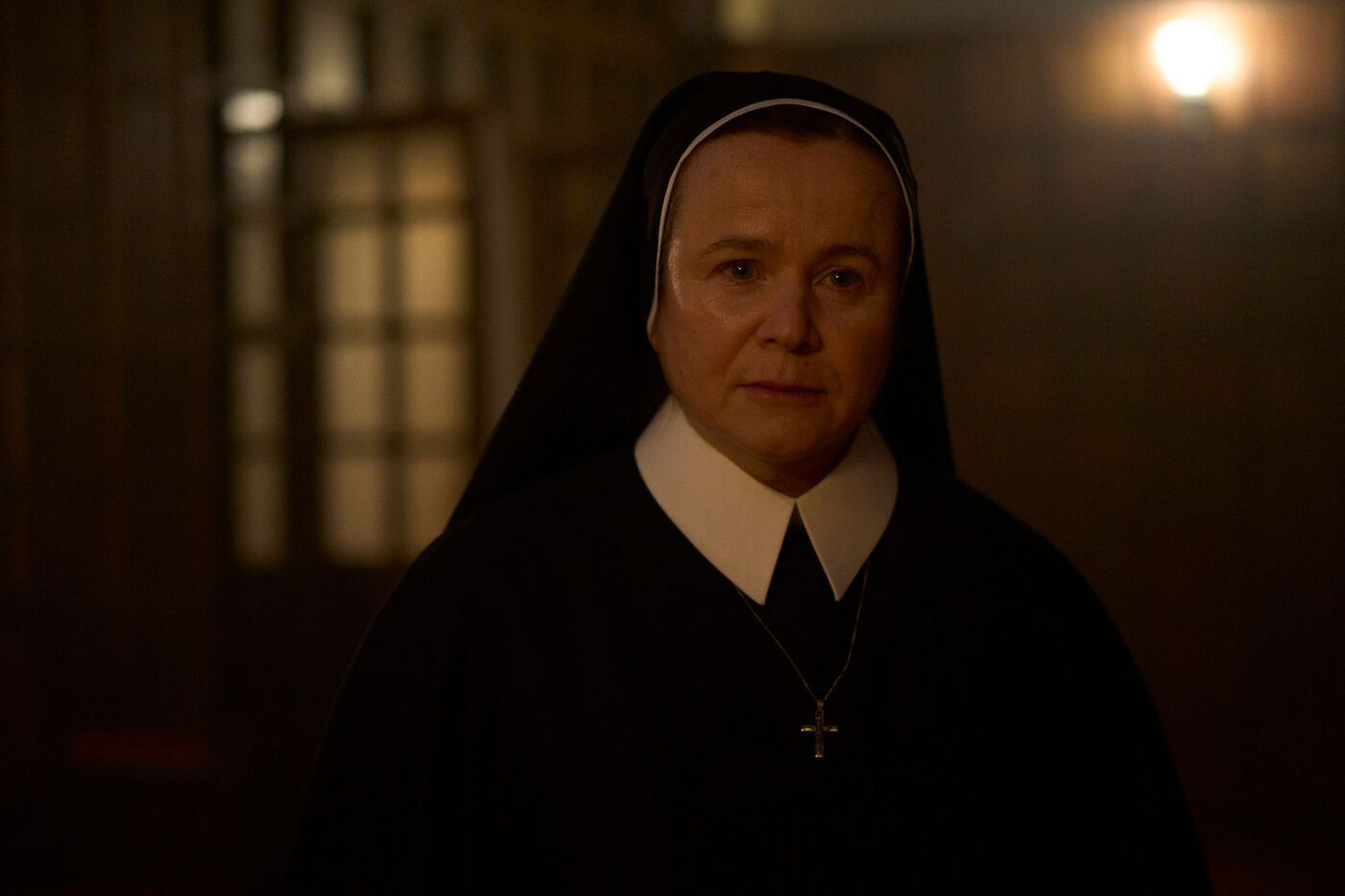
¿Qué lentes y cámaras utilizaste y por qué? / Which lenses and cameras did you use and why?
Utilizamos la Alexa 35. Creo que fue la primera vez que utilicé esta cámara, y teníamos dos conjuntos de lentes. Teníamos las Panavision Primes y también un conjunto de Panavision P Vintage.
Principalmente trabajé con el 40mm. Por supuesto, saltamos en algunas ocasiones al 85mm, pero el principal fue el 40mm para mantener esta mirada neutral, algo que consideramos importante. También teníamos un objetivo zoom.
This was the Alexa 35. I think it was the first time I used this camera, and we had two sets of lenses. We had the Panavision Primes and also a set of Panavision P Vintage.
I mainly worked with the 40mm, of course we jumped to 85mm, but the primary one was 40mm to be in this neutral way of looking, this neutral gaze was something we found important. We also had a zoom lens.
Esto está relacionado con el siguiente atributo que quería destacar. Una cosa que es característica de esta película es el uso recurrente del foco-transfoco que de repente revela partes de la historia.
Por un lado: ¿Cuál fue la idea detrás de esta decisión? Por otro lado: Técnicamente, ¿qué lente o lentes específicos utilizaste para obtener tal resultado? / This is actually related to the following attribute I wanted to highlight. One thing that stands out in the film is the recurrent use of the focus-transfocus that suddenly reveals parts of the story. On the one hand: what was the idea behind this decision? On the other hand: technically, what specific lens/s did you use for such a result?
Utilizamos el Optimo 24-290mm. A veces lo usábamos incluso con un duplicador 2x. Esta es una herramienta que a Tim realmente le gusta. Lo hemos utilizado antes en otras películas. Siempre intento tenerlo conmigo si el presupuesto lo permite, por supuesto.
A Tim le gusta encontrar un lenguaje que condense la idea central de una escena en una sola toma larga, y con larga me refiero a que podría durar uno o dos minutos, o quizás incluso más. Esta es, de hecho, una de las razones por las que me gusta trabajar mucho con Tim. Por ejemplo: quizá tenemos un diálogo de dos páginas, pero eso no es literalmente de lo que trata la escena… de repente él se centra solo en una pequeña parte del cuadro. A veces es capaz de señalar ese detalle y me dice: “esto es lo que necesitamos buscar”. Y ese pequeño momento sucederá allí en el fondo: ¿Por qué no hacer un zoom? Comenzar semi amplio, hacer zoom a través del diálogo y encontrar algo en el fondo, y eso sería toda la escena; lo miro y pienso “¡Esto funciona genial!” Y ese es Tim, así es como a veces él construye las tomas.
This was the Optimo 24-290mm. Sometimes we used it even with a 2x dubber. This is a tool that Tim really likes. We used it before in other films. I always try to have it with me on a daily basis. If the budget allows it, of course.
Tim is keen on trying to find a language which brings the core idea of a scene into one long shot, and by long I mean it could go on for one or two minutes, or maybe even more. Is this in fact why I like working with Tim a lot.
For example: maybe we have a two pages dialog, but that’s not literally what the scene is about… and he is just focusing on a little part of the scene. Sometimes he’s able to pinpoint this one detail and says to me: “this is what we need to look for.” And this tiny moment will happen there in the background. Why not doing a zoom? Starting semi wide, zoom through the dialogue and find something in the background for instance… and that would be the entire scene and then I look at it and I think “This is working great!” And that’s Tim. That’s how he looks at scenes sometimes.
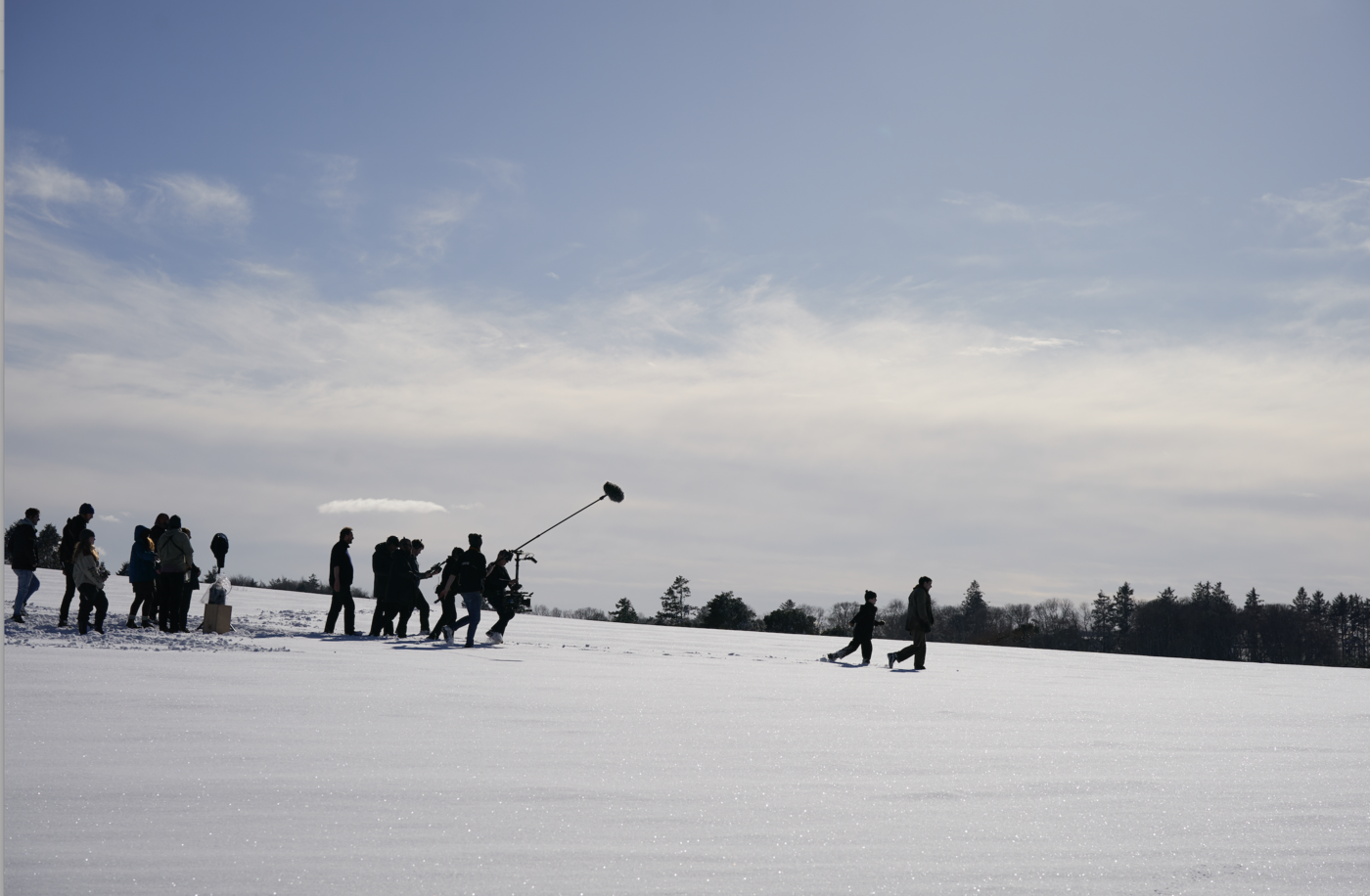
Es interesante y repetitivo como la poesía. Recuerdo cuando sucede todo ese flashback con la madre: hay un escenario muy bonito y luego el recurso del zoom cambia radicalmente el ambiente. Como espectador, estás viendo esta escena, pero esto está sucediendo en el fondo y lo hace muy orgánico. Sé que técnicamente es complicado, pero marca la diferencia. / It’s interesting and kind of repetitive, like a poetry, you know? I remember when all this flashback with the mother happens: You have a very nice setting, and then the zoom resource is changing a lot the mood. You -as a viewer- are seeing this scene, but this is happening in the background, and that makes it very organic, I know technically it’s difficult to do, but it’s very beautiful.
Puedes encontrar algunos desafíos técnicos, pero creo que todos los actores y todo el equipo involucrado deben sentir que este es el enfoque correcto para hacer una escena concreta. A veces puede ser arduo y a veces tienes que trabajar en ello antes de ver que está sucediendo… Entonces comienza a tomar forma, pero creo que la clave es que todos deben poder sentirse seguros al explorar en una dirección, tomar este riesgo, y entonces lo que es desafiante en un principio, se vuelve interesante.
A Tim le gusta encontrar un lenguaje que condense la idea central de una escena en una sola toma larga, y con larga me refiero a que podría durar uno o dos minutos, o quizás incluso más.
You might find some technical challenges, but I think all actors and everybody involved should feel that this is the right approach to do a concrete scene. Sometimes it can be a little bit arduous and sometimes you have to work on it before you see it’s happening and It starts to take shape, but everybody needs to be able to feel confident about exploring in one direction, to take this risk, and then it’s not so challenging: It becomes interesting.
¿Grabasteis todo con una sola unidad de cámara? / Did you shoot everything with a single camera unit?
Utilizamos 2 cámaras en ciertos momentos con las escenas de las niñas en la cocina porque queríamos mantenerlos frescos y estábamos buscando algo espontáneo. La ubicación era muy pequeña, pero decidimos cruzar los tiros de cámara tanto como pudimos y tratar de capturar esta sensación familiar. Era muy importante conseguir este sentido de realismo en cómo las niñas respondían a los actores interpretando a sus padres.
We did use 2 cameras at certain moments with the scenes with the children in the kitchen because I wanted to keep them fresh. And we were looking for something spontaneous. The location was very small, but we decided to more or less cross shoots as much as we could and to try to capture this family feel. That was very important to get this sense of realism in how the children responded to the actors, portraying their parents.
Con gran elegancia, el personaje principal interpretado por Cillian Murphy recuerda su propia historia, de repente aparecen flashbacks muy orgánicos que funcionan muy bien visualmente. ¿Cómo fue el desarrollo de este recurso? / With great elegance the main character played by Cillian Murphy remembers his own story, suddenly very organic flashbacks appear that work very well visually. How was the development of this resource?
Hablamos mucho de esto durante el proceso de preproducción. En mi opinión, es fácil perderse en visualmente subrayar que esto es un flashback en cualquier nivel que pueda ser: movimiento de cámara, enfoque superficial, contraste de color en la corrección de color…
He recibido muy buenos comentarios sobre esto en concreto y creo que ha sido una «misión cumplida».
Sobreexplicar el hecho de que estamos retrocediendo en el tiempo puede ser una trampa. Así que incluso discutimos cómo abordar esto en la edición: ¿Funciona simplemente con un corte brusco? Hablamos sobre transiciones, sobre sonidos… «¿Cómo se sentirá esto con música?» Analizamos todos los diálogos que tuvieron lugar en el pasado, como si retrocediéramos en el tiempo, ¿cómo queremos que se vea y se sienta esto? ¿nos sumergimos inmediatamente en la conversación o ya está ahí?
La pregunta es muy buena, lo que quiero decir es que es fácil ir un poco demasiado lejos, y eso se traduciría en subestimar a tu audiencia, lo cual creo que es lo peor que podrías hacer. De hecho, queríamos que esto se sintiera lo más fluido posible. Y estoy feliz porque lo logramos.
Well, it’s a good question because we spoke about this a lot during the pre production process. In my opinion, it is easy to lose yourself in to visually underline that this is a flashback on whatever level it could be: camera movement, shallow focus, grading color contrast…
I have received very good feedback on that, and I think “mission accomplished”.
To over explain the fact that we’re going back in time can be a trap. So we even discussed how to approach this in the edit, it works simply with a hard cut? We spoke about transitions, about sounds… “How will this feel with sound?” We had a look at all the dialogues which took place in the past, as if we go back in time, you know, how do we want this to look and feel? do we dive immediately into the dialogue or is there already?
It’s easy to go a little bit too far, and that would translate into underestimating your audience, which I think is the worst thing you could do. Actually, we wanted this to feel as fluid as possible. And I’m happy we succeeded.


